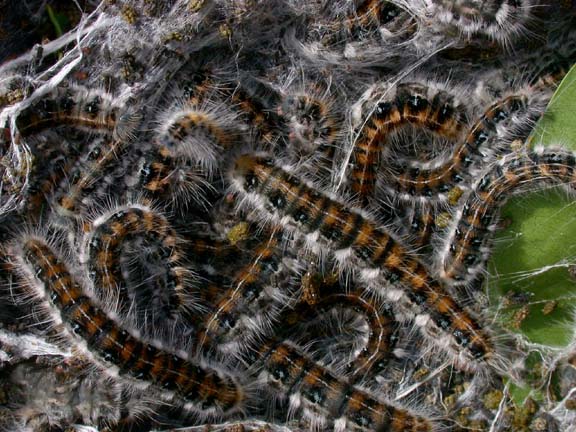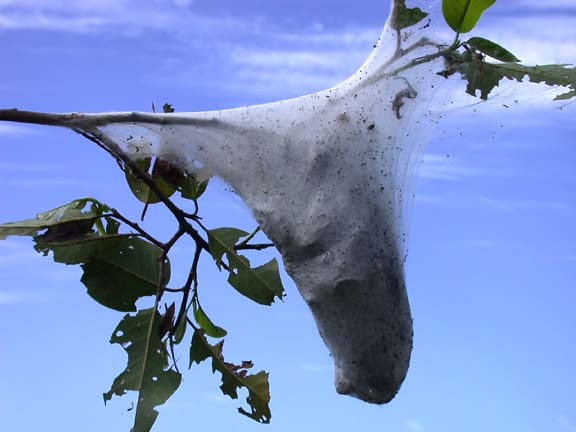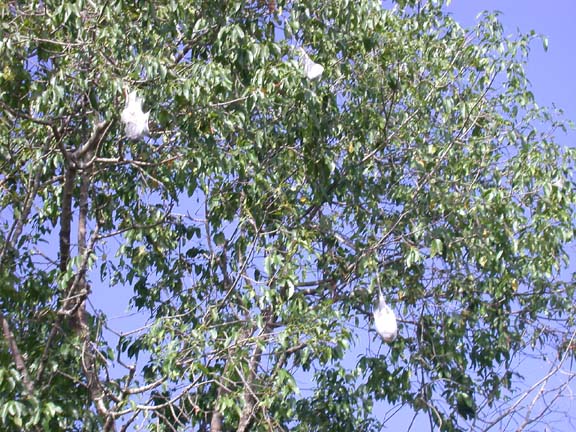Malacosoma
incurvum aztecum
(Lasiocampidae)
This tent caterpillar is widely
distributed throughout Mexico. Like temperate zone species, it feeds
on host trees when they are in the early stages of leaf development. Filip
and Dirzo reported that in the Federal District, larvae are present in
the field beginning in February for about 2 months. Pupation last
approxiately 18 days and the adults oviposit soon thereafter. Egg
masses remain on the branches of the trees until the larvae eclose in February
of the following year. Colonies that were observed in the field
in an area north of Tepic, Mexico by Costa, Fitzgerald, and Pescador-Rubio
in early January of 2003 were in all stages of development, from newly
hatched caterpillars to fully grown caterpillars dispersing over the ground
in search of pupation sites. The foraging behavior of the caterpillar is
largely unstudied.
| The tents formed by colonies hang
from the branches, enclose leaves, are bag-like, and lack the layered,
airy structure of the tents of americanum and californicum. |
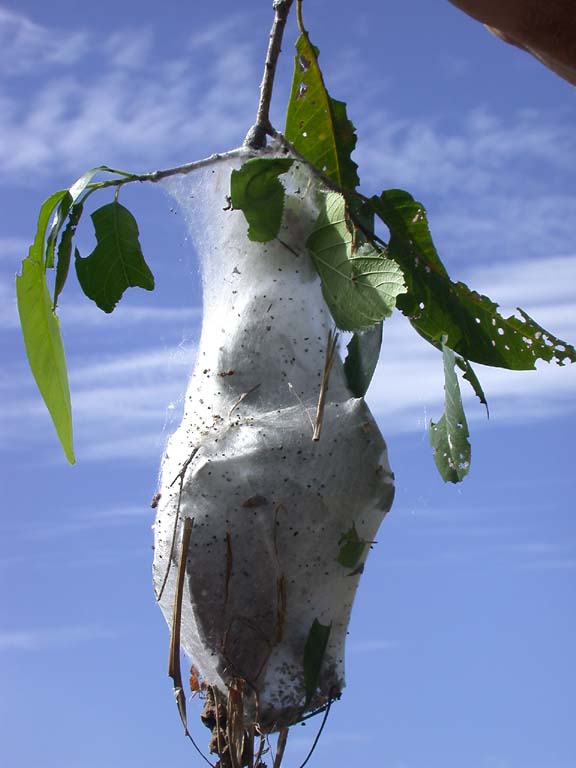 |
| The egg mass of aztecum
is similiar to that of other species of Malacosoma and covered with
spumaline. The holes in the egg mass pictured here are formed when
the caterpillars (visible at the top of the egg mass) chew their way out
of the eggs. |
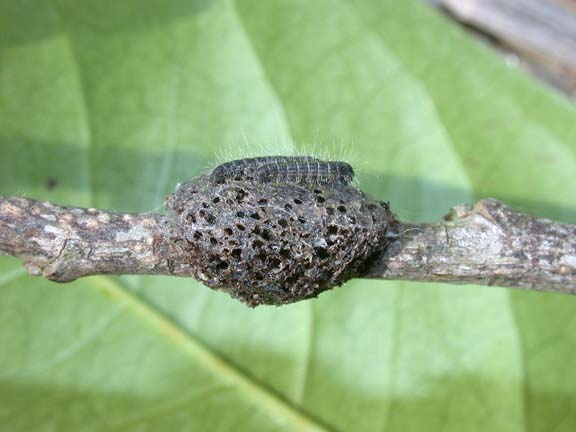 |
References
Filip, V., and R. Dirzo. 1985. Life
cycle of Malacosoma incurvum var. aztecum (Lepidoptera: Lasiocampidae)
of Xochimilco, Federal District, Mexico. Folia Entomol. Mex. 66:31-45.
Return to home page
